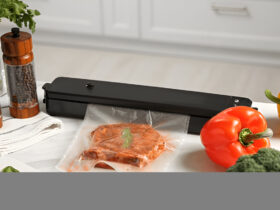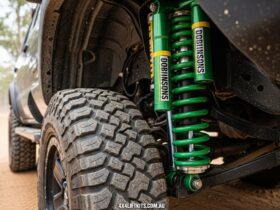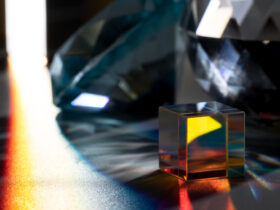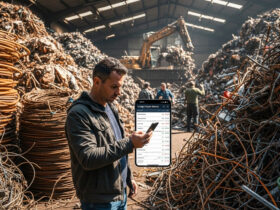Have you ever wondered what keeps our buildings standing strong against the elements, year after year? What invisible forces are at work, protecting our structures from water damage, noise pollution, and environmental wear and tear? In the world of construction, there are unsung heroes that play a crucial role in the longevity and efficiency of our buildings. One such hero is the insertion rubber sheet – a seemingly simple material that packs a powerful punch when it comes to construction benefits.
But what exactly are insertion rubber sheets, and why are they becoming increasingly popular in modern construction practices? How do they contribute to the durability, sustainability, and comfort of our built environment? These are the questions that architects, builders, and property owners are increasingly asking as they seek innovative solutions to age-old construction challenges.
In this comprehensive exploration, we’ll delve into the world of insertion rubber sheets, uncovering their hidden potential and the six game-changing benefits they bring to the construction industry. From superior waterproofing to enhanced energy efficiency, we’ll examine how these versatile materials are transforming the way we build and maintain our structures. Whether you’re a construction professional looking to stay ahead of the curve or a curious homeowner interested in the latest building technologies, this article will provide you with valuable insights into one of the most important yet often overlooked components of modern construction.
Insertion Rubber Sheets
Insertion rubber sheets are a specialized type of construction material that combines the flexibility and resilience of rubber with the strength and stability of fabric reinforcement. At their core, these sheets consist of a layer of high-quality rubber compound, typically made from materials such as neoprene, EPDM (Ethylene Propylene Diene Monomer), or natural rubber. What sets them apart from standard rubber sheets is the insertion of a fabric layer – usually made from polyester or cotton – that runs through the middle of the rubber.
The manufacturing process of insertion rubber sheets is a carefully controlled operation that ensures the perfect bonding between the rubber and fabric layers. This process typically involves calendering, where the rubber compound is pressed into sheets, with the fabric layer inserted between two rubber layers. The sheets are then vulcanized, a process that involves heating the material under pressure to create strong cross-links between the polymer chains in the rubber, resulting in a durable and resilient final product.
There are various types and variations of insertion rubber sheets available in the market, each designed to meet specific construction needs. These can range from sheets with different thicknesses and hardness levels to those with specialized properties such as high heat resistance or enhanced chemical resistance. Some manufacturers also offer custom formulations to meet unique project requirements, highlighting the versatility of this material in adapting to diverse construction challenges.
The Evolution of Construction Materials: From Traditional to Innovative
The history of construction sealing methods is as old as construction itself. In ancient times, builders used natural materials like animal fats, plant resins, and bitumen to waterproof and seal structures. As civilizations advanced, so did their sealing techniques. The Romans, for instance, were known for their innovative use of hydraulic cement in aqueducts and buildings, providing a level of waterproofing that was revolutionary for its time.
The industrial revolution brought about significant changes in construction materials and methods. The advent of rubber technology in the 19th century opened up new possibilities for sealing and waterproofing. Natural rubber, with its elasticity and water-resistant properties, quickly found applications in construction. However, it wasn’t until the 20th century that synthetic rubbers like neoprene and EPDM were developed, offering improved durability and resistance to environmental factors.
Insertion rubber sheets fit into this evolution as a perfect blend of traditional rubber technology and modern engineering. They address many of the limitations of earlier rubber products by incorporating fabric reinforcement, which significantly enhances their strength and dimensional stability. This innovation has made them particularly suitable for modern construction techniques that demand materials capable of withstanding complex stresses while providing multiple functional benefits.
Benefit #1: Superior Waterproofing and Moisture Resistance
One of the primary advantages of insertion rubber sheets is their exceptional waterproofing and moisture resistance capabilities. The rubber component of these sheets creates an impermeable barrier against water, while the fabric insertion provides additional strength and prevents tearing or puncturing that could compromise the waterproof seal.
Compared to other waterproofing methods, such as liquid membranes or bituminous sheets, insertion rubber sheets offer several advantages. They provide a more uniform and consistent barrier, are less prone to application errors, and offer better flexibility to accommodate building movements without cracking or separating. This is particularly important in areas prone to seismic activity or in structures that experience significant thermal expansion and contraction.
In real-world applications, insertion rubber sheets have proven their worth in various Australian buildings. For example, in the construction of underground parking structures in Sydney, these sheets have been used to create a watertight barrier that protects against groundwater infiltration. Similarly, in coastal areas like the Gold Coast, where buildings are exposed to harsh marine environments, insertion rubber sheets have been employed in roofing and foundation waterproofing to protect against saltwater corrosion and moisture damage.
Benefit #2: Enhanced Durability and Longevity
The durability and longevity of insertion rubber sheets are key factors in their growing popularity in the construction industry. These sheets are designed to withstand the test of time, often lasting for decades with minimal maintenance. The combination of high-quality rubber compounds and fabric reinforcement results in a material that resists tearing, puncturing, and degradation far better than traditional rubber sheets or other sealing materials.
When it comes to resistance to wear and tear, insertion rubber sheets excel in various environmental conditions. They can withstand UV radiation, ozone exposure, and extreme temperatures without significant deterioration. This is particularly important in Australia’s diverse climate, where construction materials may be exposed to intense sunlight, high humidity, and dramatic temperature fluctuations.
The cost-effectiveness of insertion rubber sheets becomes evident when considering their lifespan and performance over time. While the initial investment may be higher compared to some alternative materials, the long-term savings in maintenance, repair, and replacement costs can be substantial. Buildings that utilize these sheets in critical areas such as roofing, foundations, and expansion joints often see reduced maintenance needs and longer intervals between major renovations, translating to significant cost savings over the life of the structure.
Benefit #3: Versatility in Application
One of the most significant advantages of insertion rubber sheets is their remarkable versatility in application. These sheets can be used in various parts of a building, from foundations to roofs, and in a wide range of construction types. Their flexibility allows them to conform to irregular surfaces and complex shapes, making them suitable for both new construction and renovation projects.
The adaptability of insertion rubber sheets to different construction materials is another key feature. They can be effectively bonded to concrete, metal, wood, and other common building materials, often with minimal surface preparation. This versatility makes them an ideal choice for projects that involve multiple materials or complex interfaces between different structural elements.
Australian architecture has seen some unique applications of insertion rubber sheets. In the iconic Sydney Opera House, for instance, these sheets were used in the complex curved roof structure to provide waterproofing while accommodating the building’s unique geometry. In Melbourne’s Federation Square, insertion rubber sheets were employed in the intricate façade design, providing both waterproofing and allowing for thermal movement in the building’s distinctive cladding system.
Benefit #4: Improved Energy Efficiency
The contribution of insertion rubber sheets to energy efficiency is an often-overlooked benefit that is becoming increasingly important in modern construction. These sheets possess excellent insulation properties, helping to maintain consistent indoor temperatures by reducing heat transfer through building envelopes.
The impact on heating and cooling costs can be significant. By creating an effective barrier against thermal bridging, insertion rubber sheets help to minimize energy loss, reducing the load on HVAC systems. This is particularly beneficial in Australia’s climate extremes, where efficient temperature control is crucial for both comfort and energy conservation.
The use of insertion rubber sheets aligns well with sustainable building practices. As energy efficiency becomes a more critical factor in building design and construction, materials that contribute to reduced energy consumption are increasingly valued. Many green building certifications, such as Green Star in Australia, recognize the role of high-performance insulation and sealing materials in achieving sustainability goals.
Benefit #5: Noise Reduction and Acoustic Benefits
In today’s urban environments, noise pollution is a growing concern, and the acoustic benefits of insertion rubber sheets are becoming increasingly appreciated. These sheets have excellent sound-dampening capabilities, helping to reduce the transmission of both airborne and impact noise through building structures.

The applications of insertion rubber sheets for noise reduction are particularly relevant in urban Australian environments. In high-density residential developments, for example, these sheets can be used in party walls and floors to minimize sound transfer between units. In commercial buildings near busy roads or in flight paths, they can be incorporated into façade systems to reduce external noise penetration.
By enhancing the acoustic properties of living and working spaces, insertion rubber sheets contribute significantly to the quality of indoor environments. This is not just a matter of comfort; it can have tangible effects on productivity in workplaces and overall well-being in residential settings. As Australian cities continue to grow and densify, the role of effective acoustic solutions in maintaining livable urban environments becomes ever more crucial.
Benefit #6: Resistance to Environmental Factors
The performance of insertion rubber sheets under extreme weather conditions is a critical factor in their suitability for Australian construction. These sheets are designed to withstand a wide range of environmental challenges, from intense UV radiation and high temperatures in the north to freezing conditions in alpine regions.
The chemical resistance properties of insertion rubber sheets add another layer of protection. Depending on the specific formulation, these sheets can resist degradation from exposure to oils, fuels, and various industrial chemicals. This makes them particularly valuable in industrial construction or in areas where environmental contamination might be a concern.
The diverse Australian climate presents unique challenges for construction materials. Insertion rubber sheets have proven their worth across the country, from the tropical north where they resist mold and mildew growth, to the arid center where they maintain flexibility despite extreme temperature variations, to the southern coastal areas where they withstand salt spray and high winds.
Conclusion on Rubber sheets
As we’ve explored throughout this article, insertion rubber sheets are indeed the hidden heroes of modern construction, offering a multitude of benefits that contribute significantly to the strength, efficiency, and longevity of our buildings. From their superior waterproofing capabilities to their role in enhancing energy efficiency and acoustic comfort, these versatile materials are revolutionizing the way we approach construction challenges.
The six key benefits we’ve discussed – superior waterproofing, enhanced durability, versatility in application, improved energy efficiency, noise reduction, and resistance to environmental factors – demonstrate why insertion rubber sheets are becoming an indispensable component in contemporary building practices. Their ability to address multiple construction needs simultaneously, while offering long-term cost-effectiveness, makes them a smart choice for builders, architects, and property owners alike.
As we look to the future of construction, particularly in the context of increasing environmental concerns and the need for more sustainable building practices, the role of materials like insertion rubber sheets becomes even more critical. They represent a perfect blend of functionality, durability, and eco-friendliness – qualities that are essential in creating the resilient, efficient buildings of tomorrow.
For professionals in the construction industry, embracing these innovative materials can lead to improved project outcomes, enhanced building performance, and greater client satisfaction. For property owners and managers, understanding the benefits of insertion rubber sheets can inform better decisions about building maintenance and renovation strategies.
As we continue to push the boundaries of what’s possible in construction, materials like insertion rubber sheets will play a pivotal role in shaping the future of our built environment. By harnessing their potential, we can create structures that are not only stronger and more efficient but also more in harmony with the environmental challenges of our time. The hidden heroes of construction are hidden no more – it’s time to recognize and utilize the game-changing benefits of insertion rubber sheets in building a better, more sustainable future.









Find Us on Socials